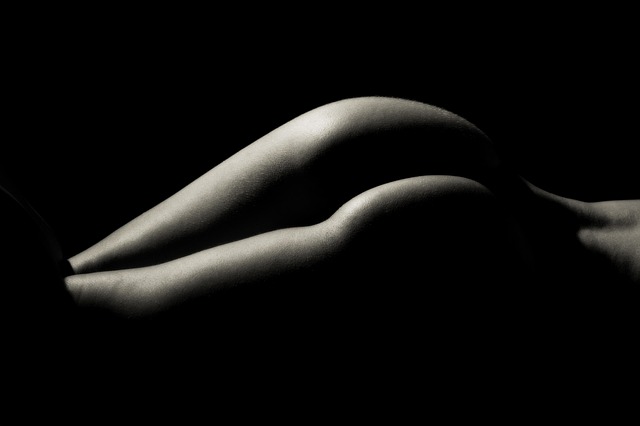Chest waxing temporarily smooths skin by trapping hairs in their active growth phase, but doesn't eliminate follicles. After waxing, hair enters dormant and resting phases before regrowing. Proper post-wax care with gentle cleansers and moisturizing helps promote healthy regrowth. Strategies to enhance chest hair regrowth include topical treatments like minoxidil, essential oils, and advanced technologies like low-level laser therapy (LLLT).
“Uncover the science behind hair regrowth after chest waxing—a process that many individuals undertake for both aesthetic and personal reasons. This article delves into the intricate details of hair growth, exploring the impact of waxing on the follicle. We examine the role of cellular regeneration in post-waxing care and its influence on future hair regrowth. Furthermore, we discover scientific methods enhancing chest waxing results, providing insights for a smoother, more effective process.”
Understanding Hair Growth Cycle and Waxing Impact
Hair growth is a complex process that follows a natural cycle, with each strand going through distinct phases. This cycle comprises three main stages: anagen (growth phase), catagen (transition phase), and telogen (resting phase). Understanding this cycle is crucial when considering procedures like chest waxing. Anagen, the active growth stage, typically lasts for 2-7 years, depending on individual genetics. During this phase, hair follicles divide rapidly, producing new hairs. Waxing, however, can disrupt this cycle. When wax is applied to the skin, it traps hair in the anagen phase, causing temporary hair loss. The extent of this impact varies based on factors like the duration and frequency of waxing.
While chest waxing might offer immediate smoothing, it’s important to recognize that it doesn’t eliminate hair follicles. After waxing, the remaining hairs go into a dormant period (catagen), followed by a resting phase (telogen). This is why, over time, hair grows back. The key lies in managing expectations and understanding that regular waxing won’t prevent hair regrowth, but it can be managed through proper post-wax care and, in some cases, targeted treatments to promote healthier hair growth cycles.
The Role of Follicles and Cellular Regeneration
Hair regrowth after chest waxing is heavily influenced by the role of follicles and cellular regeneration. Follicles, the structures from which hairs grow, play a pivotal role in this process. After waxing, the hair shaft is removed, but the follicle remains intact. It’s during the subsequent weeks that the body initiates a complex series of events to facilitate new hair growth.
Cellular regeneration comes into play as specialized cells within the follicle start dividing and differentiating to rebuild the hair shaft. This intricate process involves the migration of fibroblasts, which produce collagen and other structural proteins essential for hair growth. Additionally, keratinocytes, responsible for creating the protective outer layer of the hair, also contribute to this cellular renewal, ensuring that new hairs emerge strong and healthy, replacing the removed hair shafts in a continuous cycle of regrowth typical of body hair.
Post-Waxing Care and Its Influence on Regrowth
After chest waxing, proper care is essential for influencing the regrowth process. The skin’s delicate state post-waxing requires specific attention to prevent irritation and promote healthy hair growth. One crucial step is to avoid harsh scrubs or exfoliants immediately after waxing, as these can cause further sensitivity. Instead, opt for gentle, hydrating cleansers to soothe the skin.
Moisturizing is another vital aspect of post-waxing care. Applying a good-quality moisturizer helps replenish the skin’s natural oils, reducing dryness and itching. This simple step can significantly impact the regrowth experience by keeping the hair follicles healthy and minimizing discomfort. Additionally, using a mild after-waxing oil or serum designed for chest area treatment can provide extra nourishment to the skin and hair, ensuring a smoother transition during regrowth.
Scientific Approaches to Enhancing Hair Regrowth After Chest Waxing
The science behind hair regrowth after chest waxing involves a complex interplay of biological processes and cellular activity. Researchers have been exploring various scientific approaches to enhance post-waxing hair growth, focusing on both natural mechanisms and innovative interventions. One key aspect is understanding the hair growth cycle, which consists of three distinct phases: anagen (growth phase), catagen (transition phase), and telogen (resting phase). After chest waxing, the focus is primarily on stimulating the anagen phase again, as this is when hair actively grows.
To achieve this, scientists have looked into topical treatments, such as those containing minoxidil or certain essential oils, which can potentially lengthen the anagen phase and promote new hair growth. Additionally, advanced technologies like low-level laser therapy (LLLT) are being studied for their ability to increase blood flow and stimulate follicle activity. These scientific approaches aim to create optimal conditions for hair regrowth after chest waxing, ensuring that users experience healthier and faster hair restoration.
The journey of hair regrowth after chest waxing involves a complex interplay between the hair growth cycle, follicle health, and cellular regeneration. By understanding these scientific principles, we can optimize post-waxing care to promote faster and healthier hair regrowth. Scientific advancements in this field offer promising solutions for those seeking improved results, ensuring that smooth skin and robust hairs can coexist harmoniously after chest waxing.
